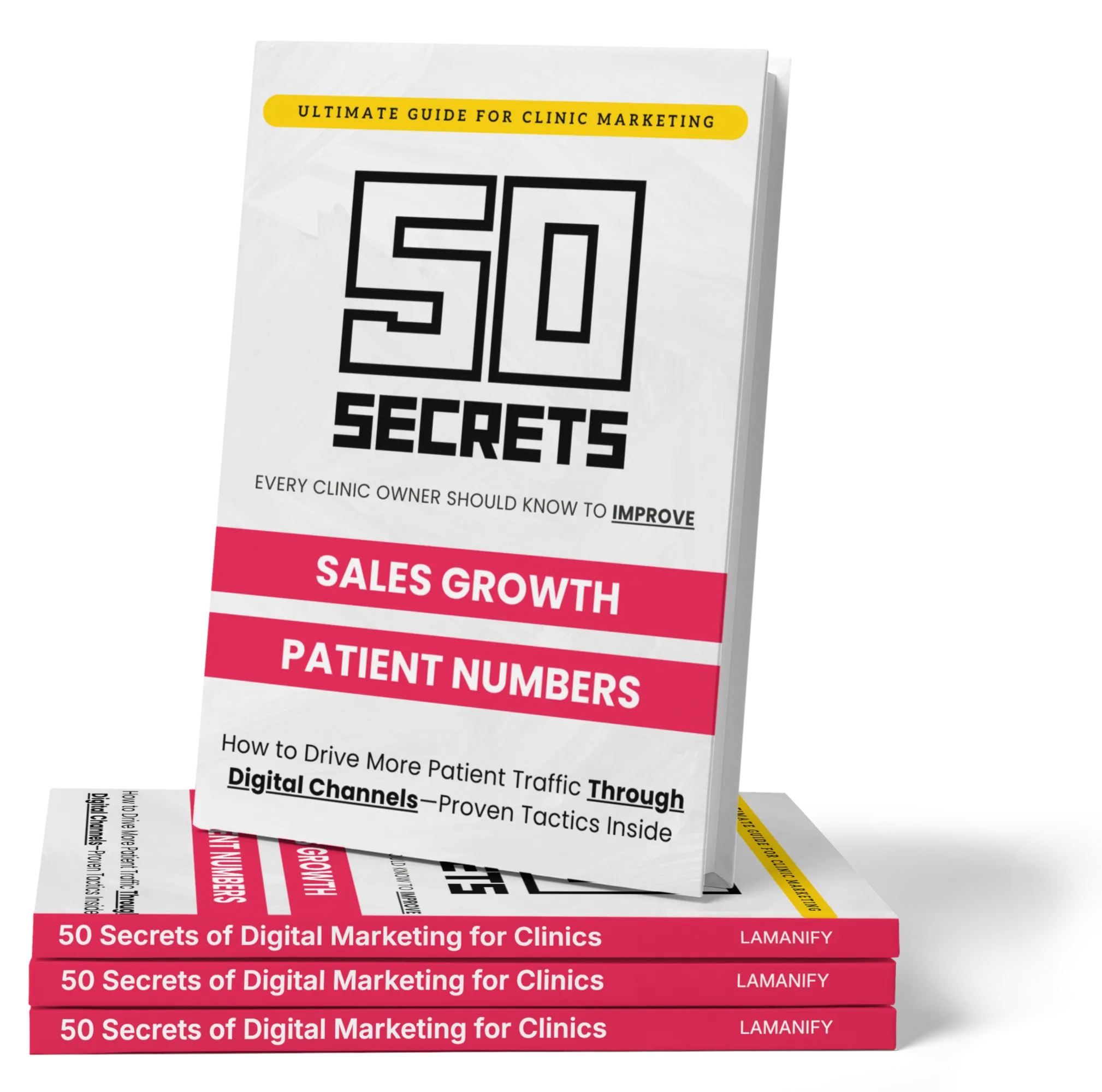

Healthcare marketing is vital for connecting with patients and growing your clinic’s reach. When choosing between SEO and Google Ads, you need to consider how each strategy can meet your unique goals. SEO focuses on organic search results to build long-term online visibility, while Google Ads provides immediate exposure through paid advertising. In this blog post, we will explore the advantages and disadvantages of both options, helping you understand which is better suited for your healthcare clinic’s needs and how to effectively implement them in your marketing strategy.
Before stepping into SEO, you should recognize that it’s a long-term strategy specifically designed to help your healthcare clinic gain organic visibility in search engine results. By optimizing your website and online presence for search engines, you are effectively positioning your clinic to attract more patients through relevant queries. This process involves using targeted keywords, improving site speed, creating quality content, and ensuring that your website is mobile-friendly, all of which contribute to a better user experience and higher rankings.
At its core, investing in SEO for your healthcare clinic offers significant long-term benefits and a high return on investment (ROI). Unlike paid advertisements, which provide immediate, but often short-lived visibility, SEO helps you build a sustainable online presence. Over time, as your website climbs higher in organic search rankings, you’re more likely to see an increase in website traffic and patient inquiries without continuously spending budget on ads. This organic visibility can lead to a steady influx of new patients and enhance your clinic’s credibility in a competitive healthcare environment.
Understanding the significance of local SEO is important for any medical practice seeking to attract patients from specific geographic locations. Most potential patients search for healthcare services nearby, which makes local search optimization vital. By optimizing your Google My Business profile and earning local backlinks, you significantly increase your chances of appearing in local search results, thereby driving more foot traffic to your clinic.
Even a small boost in local search visibility can lead to substantial growth for your healthcare practice. By prioritizing local SEO, you establish a connection with your community and ensure that patients in your vicinity can easily find your services. Leveraging local citations, reviews, and accurate business information can result in your clinic becoming a go-to option for patients looking for immediate healthcare solutions in their area.
You may find Google Ads to be a powerful tool in your healthcare marketing strategy. With its pay-per-click model, you have the ability to target specific demographics, ensuring that your ads reach potential patients in need of your services. This immediacy allows you to get in front of your audience right when they’re searching for relevant healthcare information. For a deeper examine the debate around SEO vs GOOGLE ADS, which one is easy to sell and more …, you can explore various perspectives shared by marketing professionals. This immediate access not only fosters awareness but can also lead to an increase in bookings, especially when combined with effective landing pages and engaging ad copy.
You can also refine and optimize your campaigns based on performance data. Google Ads provides analytics that can guide you in making adjustments to your keywords, budgets, and ad placements. By actively monitoring these elements, you’re able to improve your return on investment (ROI) over time, making your clinic’s ads more effective in drawing attention. With Google Ads, you may find that the flexibility and control you have over your campaigns can be particularly beneficial in a competitive healthcare landscape.
An effective pay-per-click (PPC) campaign structure is vital to harnessing the full potential of Google Ads. Start by defining your goals, whether they are to increase website traffic, generate leads, or promote specific services. Next, conduct thorough keyword research to identify the terms your potential patients are searching for. Organize your campaigns into tightly themed ad groups that match your keywords to ensure relevance, which in turn can improve your Quality Score. A higher Quality Score not only enhances your ad placement but can also lower your costs.
An additional component to consider is creating compelling ad copy that encourages clicks. Focus on highlighting the unique benefits of your clinic and include a strong call-to-action (CTA). As you refine your ads, continually monitor conversion rates and make data-driven optimizations. This iterative process will help you achieve better performance and ensure your marketing dollars are well spent.
An vital aspect of running Google Ads for your healthcare clinic is adherence to advertising compliance regulations. The healthcare industry is subject to various legal requirements, and it is important to be aware of these when creating your ads. Regulations from organizations such as HIPAA (Health Insurance Portability and Accountability Act) play a significant role in determining what information you can disclose. You must ensure that your ads don’t include misleading claims, and always verify that any patient testimonials or reviews comply with local laws.
Plus, staying compliant doesn’t just protect your clinic from potential legal issues; it also enhances your reputation. Adhering to advertising guidelines helps build trust with prospective patients, ensuring that they feel secure in choosing your services. Regularly refreshing your knowledge of compliance standards can aid you in creating effective, trustworthy ads that resonate with your audience while safeguarding your clinic’s integrity.
Now that you have a clearer understanding of the differences between SEO and Google Ads, it’s important to evaluate the overall cost implications for your healthcare clinic. Each strategy has its own financial requirements, and these can greatly impact your budget. While SEO requires a more significant upfront investment to build a strong organic presence, Google Ads provides a more immediate return, allowing you to see results as soon as you initiate your campaign. To examine deeper into this topic, check out this insightful article on Google Ads and Organic SEO – which is better for doctors?.
For healthcare clinics looking for sustainable growth, investing in SEO can offer substantial long-term value. The initial costs might include hiring an SEO specialist or agency, creating high-quality content, and optimizing your website. However, once you establish a strong ranking in search results, the ongoing costs tend to decrease, allowing you to enjoy free, organic traffic over time. Since potential patients often turn to search engines to find trustworthy healthcare providers, optimizing your online presence can lead to a steady stream of leads that require significantly less maintenance.
Between SEO and Google Ads, budget management tends to be more dynamic with the latter. Google Ads operates on a pay-per-click (PPC) model which means that you pay each time someone clicks on your advertisement. This can be beneficial as you can set daily or monthly spending limits, making it easier to manage your clinic’s advertising budget. However, the costs can escalate quickly if not monitored closely, particularly in competitive healthcare niches. You have the ability to tailor your campaigns to fit your financial constraints, enabling you to pause or adjust as per your clinic’s needs.
Analysis of your Google Ads performance is crucial in managing your budget effectively. You should consistently review key metrics such as click-through rates, conversions, and overall return on ad spend. This data enables you to refine your approach, ensuring your investments are yielding the desired results. Adjusting your spending or targeting based on performance can help you maximize your advertising dollars, keeping your campaign efficient and cost-effective.
Your healthcare clinic’s patient acquisition strategies should efficiently combine various tactics to attract and retain patients. Understanding the digital landscape is important, especially when choosing between SEO vs. Google Ads: Which Works Best? + Pros and Cons. Both methodologies offer unique benefits, and selecting the right one for your practice can significantly influence your visibility and growth. You must consider not only your budget but also how each strategy aligns with your long-term goals and target audience’s needs.
Patient acquisition begins with understanding search intent and mapping the patient journey. Patients often turn to search engines to find solutions to their healthcare needs, which highlights the importance of employing SEO tactics to ensure your clinic appears prominently in relevant searches. By creating valuable, informative content that addresses potential patients’ queries, you can build trust and encourage them to consider your services when they require healthcare assistance.
Beside driving traffic to your website through either SEO or Google Ads, converting that traffic into actual patients is where the real challenge lies. You need to optimize your website to ensure that visitors can easily navigate and find information regarding your services, treatment options, and appointment scheduling. Formulating a clear call-to-action is important, making it as simple as possible for potential patients to reach out or book an appointment.
Plus, ensuring that your website is user-friendly and mobile-optimized can significantly improve conversion rates. An intuitive design with clear information and easy navigation will encourage visitors to take the next step in their healthcare journey. Integrating features like chatbots for instant answers or online booking can also streamline the process, making it more likely that potential patients will convert into long-term clients.

Keep in mind that performance metrics are imperative for evaluating the success of your marketing strategies in healthcare. When considering SEO and Google Ads, it’s important to focus on various analytics that can guide your decision-making process. Tracking your website’s organic traffic, bounce rate, and conversion rates gives valuable insights into how well your SEO efforts are performing. Additionally, monitoring your search engine rankings can provide long-term visibility indicators, helping you gauge the effectiveness of your content and keyword strategy.
The tools available for SEO analytics, such as Google Analytics and Google Search Console, offer a wealth of data to help you refine your strategies. These platforms allow you to track user behavior, keyword performance, and the overall health of your website. By analyzing these metrics, you can identify which pages drive traffic and which require optimization. Tailoring your content based on these insights ensures that you continually improve your SEO performance, ultimately leading to higher visibility and patient acquisition.
Against this backdrop, Google Ads offers more immediate performance tracking through its robust dashboard. You have the ability to monitor metrics like click-through rates (CTR), conversion rates, and cost per acquisition (CPA) in real time. This immediate feedback allows you to adjust your campaigns on the fly, optimizing ad copy or targeting specific demographics to enhance performance. You can set goals for your campaigns and assess how well they align with your clinic’s objectives, ensuring that your ad spend yields the best possible results.
Understanding the significance of tracking metrics in Google Ads is fundamental to your success. With comprehensive reporting features, you can explore the details of your campaigns, analyzing different aspects such as which ads attract the most attention and where your potential patients are engaging the most. This level of scrutiny enables you to allocate your budget more effectively and design campaigns that resonate with your audience, leading to improved patient engagement and ultimately supporting your clinic’s growth and profitability.
Not all marketing strategies will yield immediate results, and understanding the timeline for implementing SEO and Google Ads can significantly impact your healthcare clinic’s success. While Google Ads provides almost instant visibility once your campaigns are live, SEO involves a more gradual process. This means you’ll need to be patient and committed to your SEO strategy as it typically takes weeks or even months to see the desired impact on your website’s rankings and traffic. Implementing both strategies simultaneously can often provide the best balance for prompt results and sustainable growth.
Along with understanding the timeline, you will want to familiarize yourself with the different phases of SEO development. Initially, you’ll conduct thorough keyword research to identify terms your potential patients are searching for. This will be followed by an on-page optimization phase, where you will enhance your website’s content, meta tags, and technical aspects to align with those keywords. Finally, link building and continuous content creation are necessary to maintain and improve your rankings over time.
By contrast, launching a Google Ads campaign can be done relatively quickly. Start by defining your target audience and setting clear objectives for your ads. Then, you will create ad copy and determine your budget before finally configuring your campaigns in the Google Ads platform. This process allows you to drive targeted traffic to your clinic almost immediately after your campaigns go live.
At the same time, continuous monitoring and optimization are integral to the success of your Google Ads campaigns. You will need to analyze performance metrics regularly, adjust bids, and refine targeting to maximize your return on investment. This iterative approach ensures that your ads remain effective and relevant, adapting to the needs of your patients and the competitive landscape of healthcare services.
Ultimately, choosing between SEO and Google Ads for your healthcare clinic depends on your specific goals, budget, and timelines. If you aim for long-term visibility and sustainable growth, investing in SEO may be the ideal route. It allows you to build organic traffic and establish your clinic as a trusted source of information over time. However, if you need immediate results and have the budget to support it, Google Ads can effectively drive quick traffic and attract potential patients right away. Each option has its merits, and the best strategy may even involve a combination of both to cover various aspects of your marketing needs.
As you weigh your choices, consider your clinic’s unique circumstances, including your target audience, competition, and available resources. Both SEO and Google Ads can enhance your online presence and help you reach more patients. By aligning your marketing strategy with your specific objectives, you can effectively position your healthcare clinic to succeed in an increasingly competitive digital landscape.



